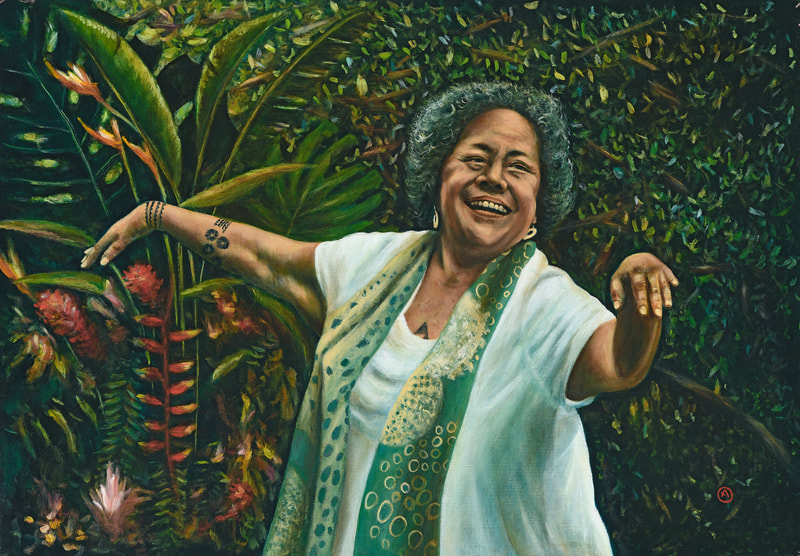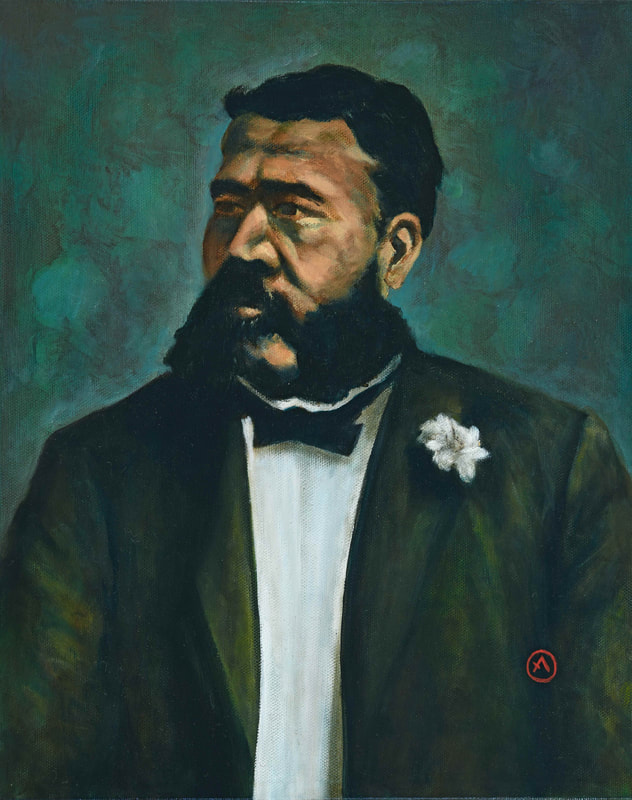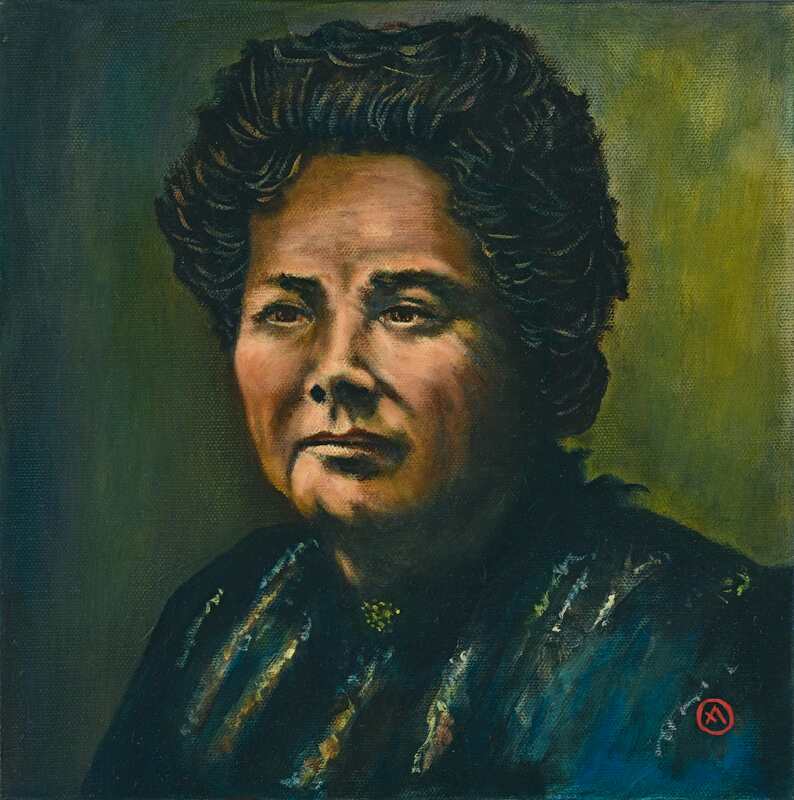Molinas' original intent was to install the work at Hale Hōʻikeʻike at the Bailey House Museum where visitors and community members could spend time with the paintings and "learn more about the everyday lives of the people who are indigenous to this land," according to the artist, who continues, "I am interested in this opportunity because I value the Hawaiian culture and want to help perpetuate the history and stories of the people of Hawaiʻi."
However, as with the most recent SMALL TOWN * BIG ART features with Eric Okdeh (who painted the mural Ma kāhi o ka hana he ola malaila at the Main Street Promenade in October) and Michael Takemoto (who led Wailuku's ʻAlalā Renaissance in November), the COVID-19 pandemic necessitated a shift in how the work would engage the public.
"Community engagement is a top priority for SMALL TOWN * BIG ART," remarks program lead Kelly McHugh-White, "each public art project undergoes a period of collaborative development where we determine how the public can learn from, contribute to and continue the dialogue that a work of art may inspire. Because we can't be asking folks to gather at the Museum to interact with the work and with one another, we opted to supersize the paintings, find a local partner to display them towards the streets of Wailuku, and create a short film to get the momentum flowing for conversation and continual sharing."
That local partner is Dean Duque of First Hawaiian Bank, who met with McHugh-White earlier this year to gain a better understanding of the program's goals.
"My colleague Joanne Stevenson and I both admired the intention to not only share history and culture with our community, but to create a platform to learn from the community as well," shares Dean Duque, First Hawaiian Bank Senior Vice President & Maui Region Manager. "We know that the team worked closely with Aunty Wallette Pellegrino on their last project and that each artist connects their work with an ʻōlelo noʻeau. We appreciate the program's connection to First Hawaiian Bank’s core values of Caring, Character and Collaboration."
Large-scale replicas of Molinas' three portraits now face Market Street from the bank's front window display, each with a link to learn more about the work and to share perspectives on the concept of "legacy," that is touched upon in a short film about the artwork.
"Legacy, truly for me, is my 'ohana," shares portrait subject Hōkūlani Holt, a Maui-based kumu hula and Hawaiian cultural/language specialist, "I have halau, I have hula, I've had many students, but it's your children that will carry on what you hope you have instilled in them. Legacy is not only what you do, but it's where you call you, where you call your identification to 'āina. What I hope people will say when I die, is that she was tremendously proud to be Hawaiian and she was tremendously proud to be from Maui."
Hayden Aluli, the great grand-nephew of subjects Judge Noa Auwae Kepoikai and his wife Rose (Daniels) Kepoikai - each born in the 1860s - shares, "I think portraying our ancestors that have come and passed is a connection that we have as a younger generation to remind us of where we come from. To see these Hawaiian faces, now, in Wailuku, is just an inspiration as for me to be Hawaiian and to want to live up to their legacy and try to contribute with the work that we do as Hawaiians for our community."
Please visit https://www.smalltownbig.org/avi.html to learn more about the work and to share your own mana'o on legacy.



 RSS Feed
RSS Feed